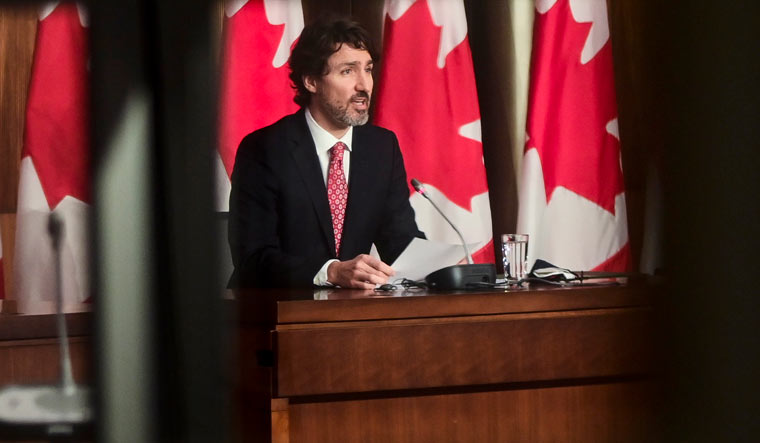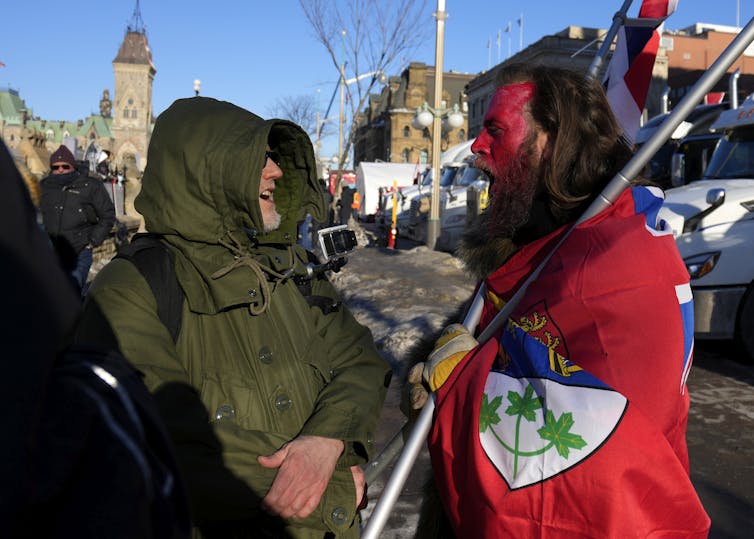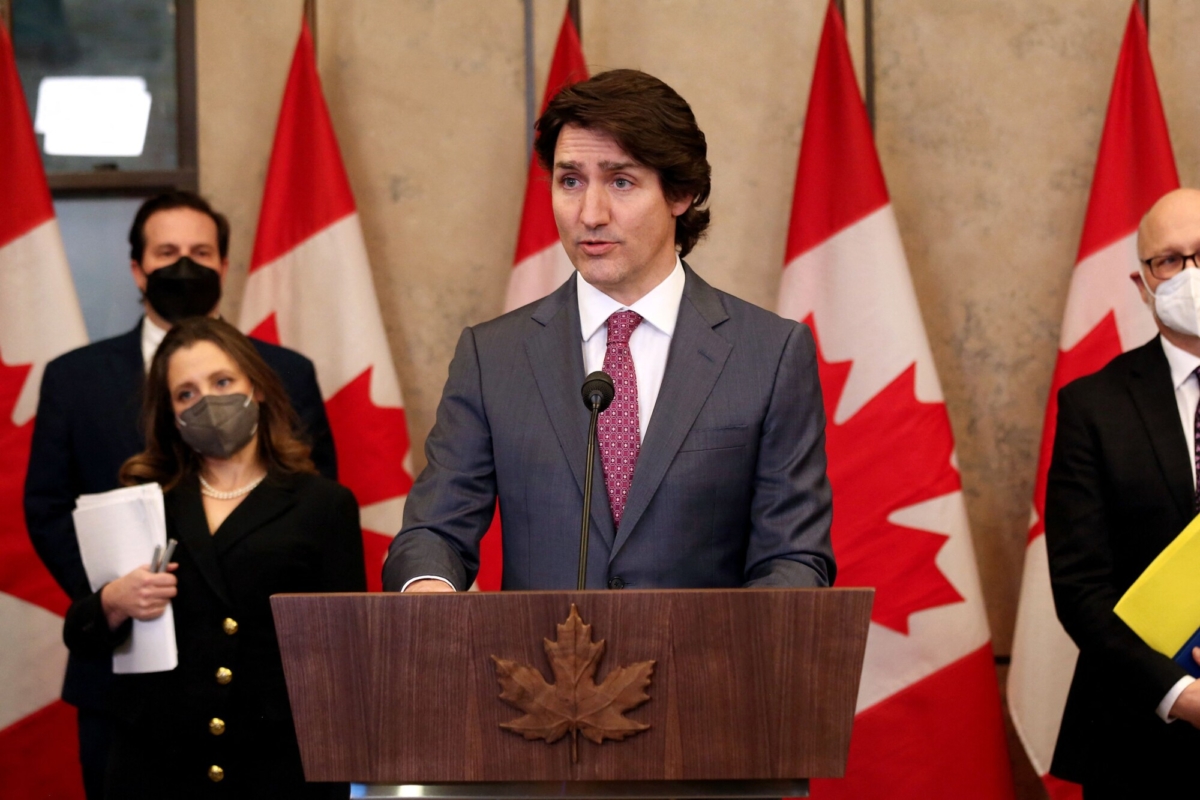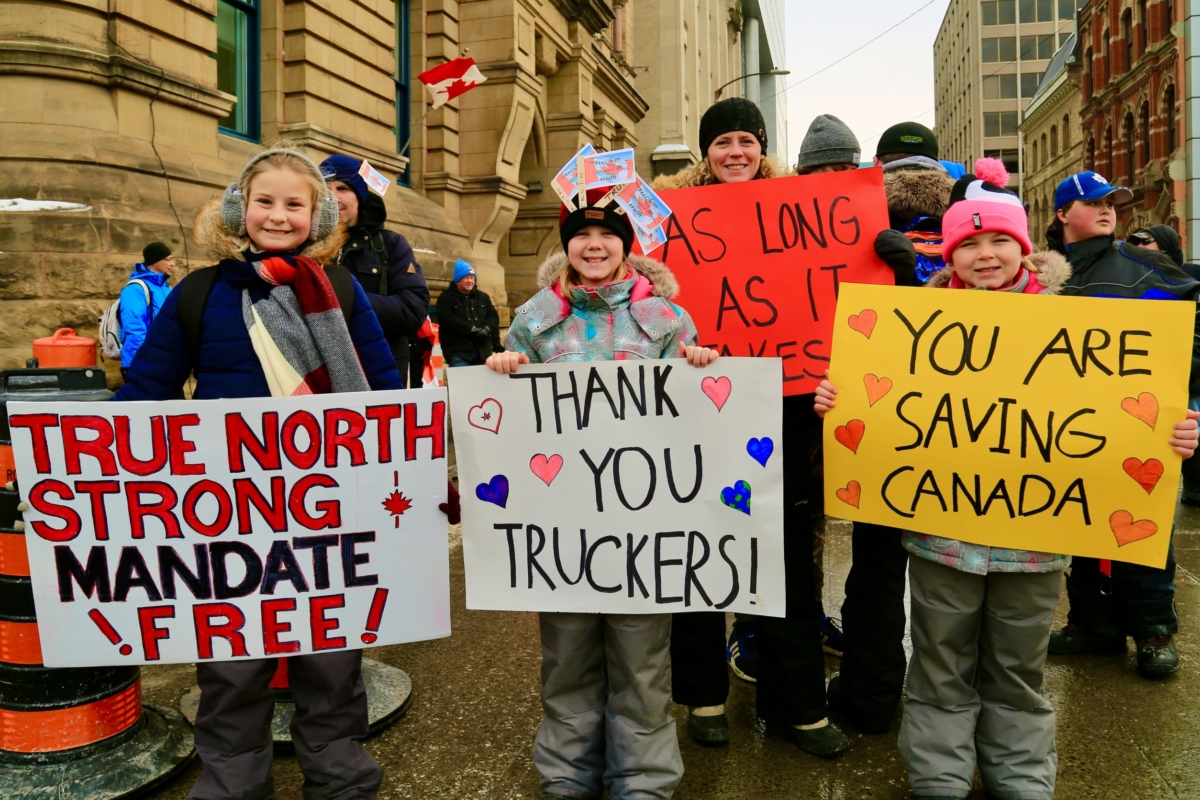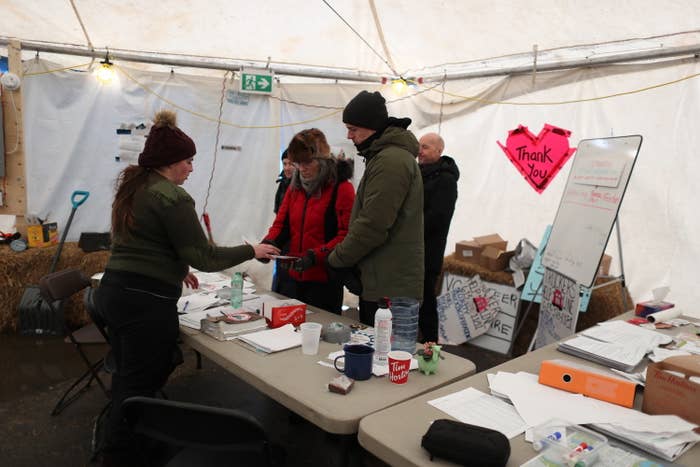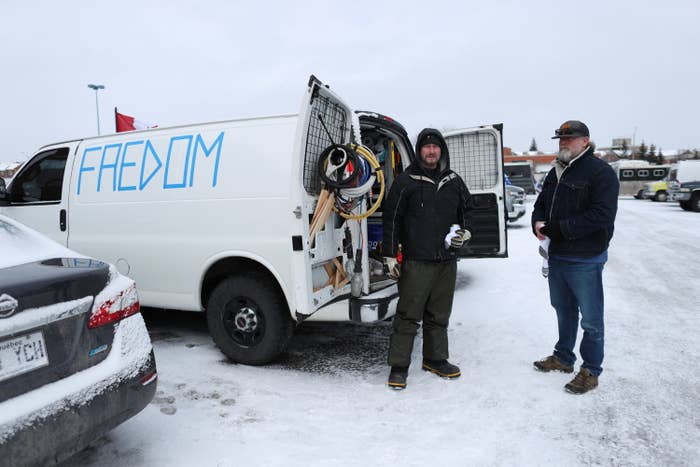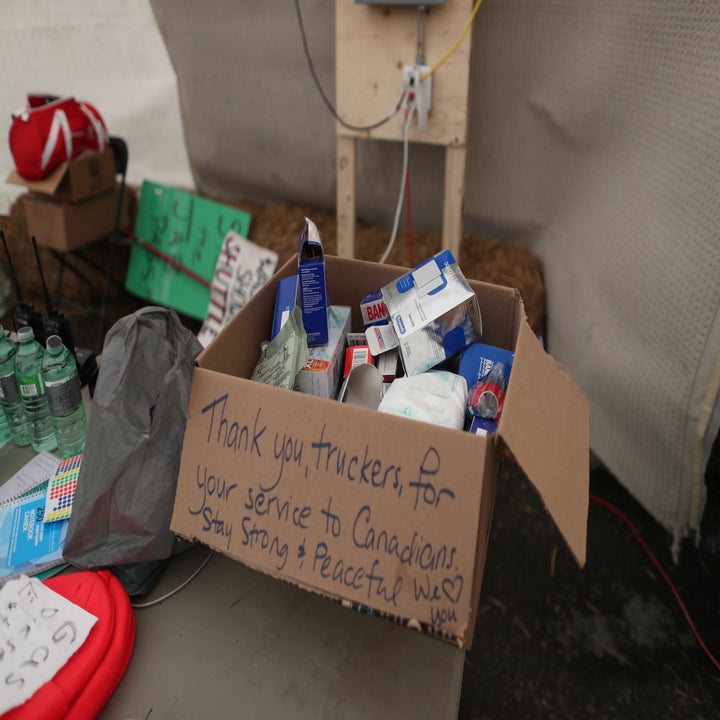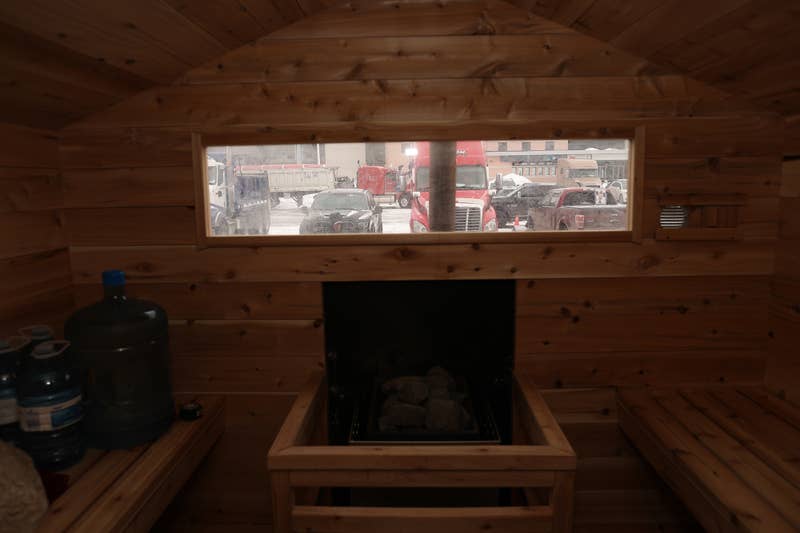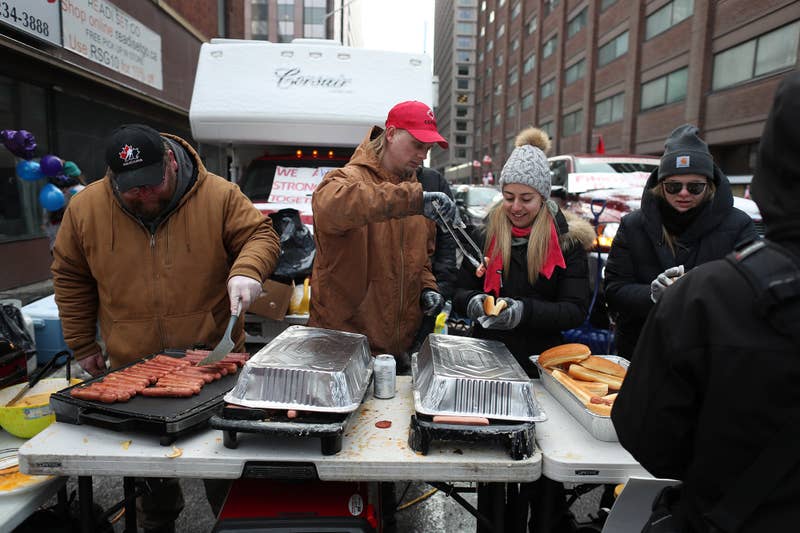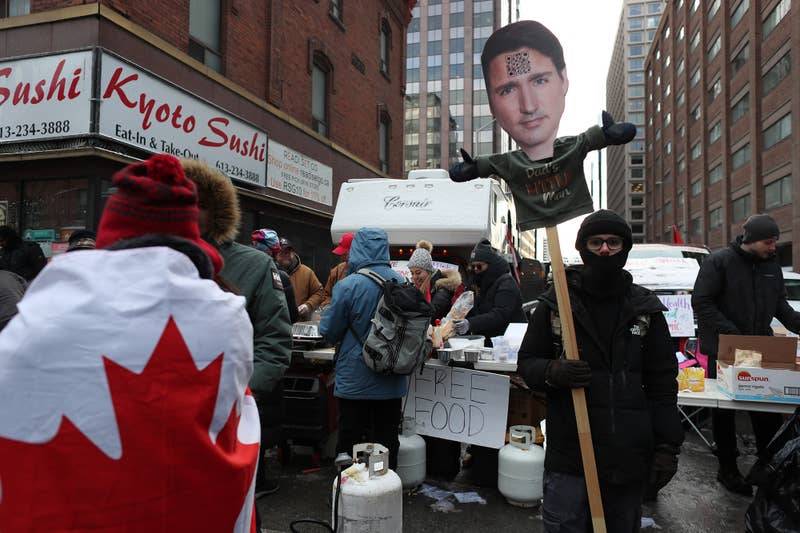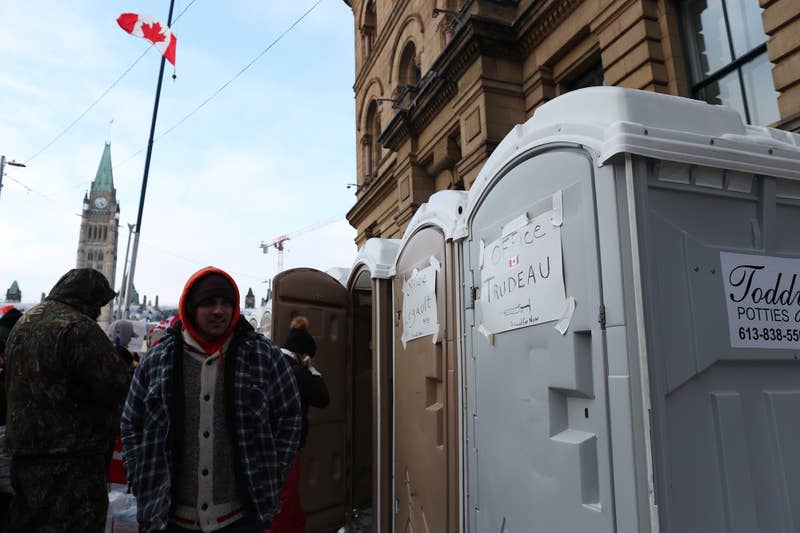BY CAROLYN Y. JOHNSON• THE WASHINGTON POST • FEBRUARY 14, 2022
A health care worker prepares a dose of the Moderna COVID-19 vaccine at the CareNow Denver University urgent care center in Denver on Nov. 16, 2021. (Daniel Brenner/Bloomberg)
Volunteers are rolling up their sleeves to receive shots of experimental vaccines tailored to beat the omicron variant — just as the winter coronavirus surge begins to relent.
By the time scientists know whether those rebooted vaccines are effective and safe, omicron is expected to be in the rearview mirror. Already, mask mandates are easing. People are beginning to talk about normalcy.
The disconnect highlights the exhausting scientific chase of the last year — and the one that lies ahead. And it underscores a more pressing, overarching conundrum: Is chasing the latest variant a viable strategy? Instead of testing and potentially deploying a new shot when a new variant pops up, what if a single vaccine could thwart all iterations of this coronavirus and the next ones, too?
By now, rebooting vaccines to match a new variant is becoming part of scientific muscle memory. Drug companies made vaccines to fight beta, delta and now omicron. None of those shots have been needed yet, but to many scientists, it is a short-term, shortsighted and unsustainable strategy.
“You don’t want to play this whack-a-mole approach,” said David R. Martinez, a viral immunologist at the University of North Carolina at Chapel Hill. “This could go on forever.”
The original shot has held up remarkably well, but there’s no guarantee how it will fare against the next variant. Scientists like Martinez want to end the cycle of catchup.
They are inventing vaccines designed to foster broad protection — an immunity wall that will repel not only the variants of SARS-CoV-2 that we know about, but those yet to emerge.
At minimum, the world needs a truly variant-proof vaccine. Even better would be a shot that would also stop a future pandemic, protecting against a yet-unknown coronavirus that will jump from animals into people in the years to come.
Some experts have questioned why there isn’t already an Operation Warp Speed for these universal vaccines.
Anthony Fauci, President Joe Biden’s chief medical adviser, stresses the need for patience, along with urgency. There are scientific gaps needing to be filled to build a vaccine that is broadly protective and lasts a long time — and the National Institutes of Health last fall awarded $36 million to groups trying to answer basic questions.
“You shouldn’t confuse the rapidity and the ease with which we developed a coronavirus vaccine for SARS-CoV-2 with the extraordinary obstacles you might face in trying to get a vaccine that protects” more broadly, Fauci said in an interview with The Washington Post. “There’s a lot of scientific discovery that needs to go into that.”
Privately, though, scientists say Fauci is urging them to hurry up.
“I worry about chasing variants, because there’s always going to be a new variant,” said Drew Weissman, a vaccine pioneer and immunologist at the University of Pennsylvania Perelman School of Medicine who is working on a pan-coronavirus vaccine. “Right now, every six months they pop up, but they’re going to pop up until the world is vaccinated.”
Flush with the success of the first vaccines, many scientists working on next-generation shots had been thinking big in 2021. Maybe they could make a vaccine that would repel not only SARS-CoV-2 and the original SARS, but also two coronaviruses that cause the common cold, Middle East respiratory syndrome, as well as future bat coronaviruses that could jump into humans.
A New England Journal of Medicine study last year demonstrated that, at least in concept, it was possible to generate broad immune protection against many viruses. Researchers in China showed that survivors of the original SARS outbreak two decades ago who were vaccinated against SARS-CoV-2 produced antibodies capable of blocking an array of variants and other coronaviruses.
But making a single vaccine that works against such a wide range of viruses is tricky, and the beta, delta and then omicron variants recalibrated some of that sweeping ambition.
“When SARS-CoV-2 first emerged, it was a virus with very few tricks, and so we were very successful,” said Dennis Burton, chair of the department of immunology and microbiology at Scripps Research Institute. “But it’s acquiring more and more tricks, basically, and so it’s more and more difficult to deal with — you’ve got to be more precise with the antibody you induce through your vaccine.”
Before developing a vaccine to stop the next pandemic, it became clear that a more modest goal — a variant-proof vaccine against SARS-CoV-2 - may be needed to help end this crisis.
“Omicron really has pointed us to say, ‘Hey, we’re not out of this epidemic, yet, and we don’t know what the future holds with this epidemic.’ We need to focus on what the next outbreak might be, but also make sure we’re covering any variant ... that would come up in the next three to five years,” said Barton Haynes, an immunologist and vaccine expert at Duke University Medical Center.
In the short-term, Haynes’s team is focused on stopping variants. They are manufacturing a vaccine — a nanoparticle with a fragment of the spike dotting its surface. In animal studies, that vaccine triggered broad immune protection against variants, the original SARS virus and bat coronaviruses. Haynes hopes to begin testing it in people this year.
Results are expected soon from the first human tests of a different “pan-SARS” vaccine developed by scientists at Walter Reed Army Institute of Research. In early studies, they have also shown to provide broader protection than the first-generation shots. It consists of a many-sided nanoparticle dotted with the spike found on the original version of the coronavirus that emerged in Wuhan, China.
Vaccines teach the immune system to recognize a virus. They often do this by presenting a version of the virus — which simply could be a telltale feature, such as the spikes on the outside of the coronavirus. The power of these new vaccines stems from which feature they show and how they present it. Virus fragments are assembled onto many-sided nanoparticles, resembling the way the spike might look on the surface of the virus itself — an approach that helps focus the immune response.
“The immune system has evolved to respond strongly to repetition. Viruses have repetitive arrays of proteins on their surfaces,” said Neil King, a University of Washington biochemist with another variant-proof vaccine candidate in human trials. “That’s why nanoparticle vaccines work better, is that they present the antigen as a repetitive array, to provoke that strong response.”
The first versions of coronavirus vaccines were powerful, but simple. They took spiky proteins from the outside of the virus that emerged in 2019, tweaked them to keep the spikes in the right shape — and presented those spikes to the immune system.
The next-generation vaccines, the ones built to stop future pandemics, will probably require greater sophistication.
Martinez is working on a vaccine at UNC that shows the immune system “chimeric” spikes. Like the chimera creature of Greek mythology - with the head of a lion, the midsection of a goat and the rear end of a serpent — these vaccines use spikes patched together from fragments of different coronaviruses. A piece from SARS-CoV-2, another bit of the original SARS virus and a third component from a bat coronavirus.
Other researchers, like King, are building “mosaic” and cocktail vaccines, which contain other combinations. A tiny particle might be stippled with a key piece of spike proteins from SARS-CoV-2, SARS and two bat coronaviruses, for example. California Institute of Technology researchers created mosaic nanoparticles with fragments from four to eight different coronaviruses.
The precise approach that will form the best universal vaccine is still a matter of scientific debate. But this much is for sure: Updating vaccines every six months isn’t going to be a reasonable — or equitable — way to protect people globally.
“I don’t think the experience with the variants to date, trying to pursue the new variants as they emerge and rapidly generate variant-specific vaccines — I don’t think that is a strategy for the long term, even in high-income countries, and certainly not in less-well-resourced environments,” said Richard Hatchett, chief executive of the Coalition for Epidemic Preparedness Innovations, a nonprofit funding efforts to develop variant-proof and universal vaccines.
Discovering that antibodies exist that are capable of recognizing and neutralizing a broad array of viruses is key. But learning how to trigger them to create a shield of protection could be more complicated than it sounds.
It might not be enough that people can generate antibodies to block a variety of coronaviruses. The trick becomes whether a vaccine can generate sufficient quantities to protect people. In HIV, for example, antibodies that block many strains of the always-mutating virus have been isolated in people with long-term infections. But using a vaccine to replicate what nature can accomplish has loomed as the Holy Grail for the field.
In SARS-CoV-2, the spike protein looks a bit like a tree, and rare antibodies that bind to the base of the tree can block a broad array of related coronaviruses in laboratory studies, said Duane Wesemann, an immunologist at Brigham and Women’s Hospital in Boston.
“But it’s very low frequency, and if we’re making a vaccine that just does that, we have to see it may not be that easy,” Wesemann said. “It’s not clear we can elicit those special antibodies in high enough levels.”
A universal vaccine will arrive in a more complicated world than the first-generation vaccines encountered. People will have different levels of pre-existing immunity, from vaccinations and from infections related to variants.
Scientists do not agree about how previous exposures -— known as immune imprinting, or sometimes called “original antigenic sin” — will affect people’s response to new vaccines, for good or bad. One possibility is that new vaccines will create the strongest response to the virus people were originally exposed to, not the newest one. But vaccine designers like Martinez see the potential to exploit this quirk of the immune system as an asset, to focus the response on the right target.
Another scientific issue that remains to be solved is durability. A broad vaccine with protection that fades rapidly might be impractical to use to prevent future pandemics. After all, SARS emerged about two decades ago, and MERS a decade later.
“We’re looking for a tetanus-like shot,” Haynes said. “We all have to get a tetanus shot every 10 years. That would be really terrific.”
The quest for a truly universal vaccine is urgent, but many experts caution that it’s a far different challenge than creating the first-generation vaccines.
“We have been studying influenza viruses more than 70 or more years, and we are trying to make universal influenza vaccines, and we still haven’t been able to do it,” said Yoshihiro Kawaoka, who is working on a pan coronavirus vaccine at the University of Wisconsin at Madison. “But this is a different virus, and I think it’s worth trying. What I’m trying to say is that it may not be easy.”
